New Septic System Cost 2023
.png) |
| New Septic System |
New Septic System Cost 2023
Introduction
Septic systems are a vital component of residential properties that are not connected to a municipal sewer system. These systems function by treating and disposing of wastewater onsite, ensuring the health and safety of the household and the environment. However, a new septic system can be a significant investment for homeowners, with costs varying depending on several factors.
Introducing the 2023 Septic System Pricing Guide: Expert Opinions from Industry Veterans Boasting a cumulative experience of more than 40 years, my wife Jeane and I have navigated the complex world of septic systems, tackling numerous challenges and unique situations. As seasoned experts, we are passionate about sharing the wealth of knowledge we've accumulated over our careers with current septic system owners and those considering a new installation. This blog is committed to offering valuable insights and advice on septic system installations costs and all other pertinent topics
Factors Affecting the Cost of a New Septic System
Homeowners must consider several factors when determining the cost of a new septic system. These factors include the type of septic system, the size and design of the system, soil type, permit requirements, and regional cost variations.
Type of Septic System
Size and Design of the System
Soil Type
Permitting and Approval
Regional Cost Variations
.png)
As we move into 2023, homeowners need to understand the cost of a new septic system and the factors that influence it. Planning and budgeting for a new septic system are critical aspects of maintaining a safe and healthy home.
One of the primary factors affecting the cost of a new septic system is the type of system chosen.
Conventional septic systems are the most common and straightforward type of septic system. They consist of a septic tank and drain field and can be less expensive than alternative systems.
Alternative systems, such as aerobic treatment units (ATUs) and mound systems, can be more expensive due to their complexity and specialized components.
Another significant factor affecting the cost of a new septic system is the size and design of the system itself.
The larger the system, the more expensive it is likely to be, stating the obvious!
The design of the system is also a crucial factor. A poorly designed system can lead to significant problems further down the line, such as system failure and costly repairs.
Soil type is another important factor to consider when estimating the cost of a new septic system.
Soil type affects the ability of the system to drain wastewater properly.
Soils that are heavy in clay or have a high water table may require additional measures to ensure proper drainage, which can increase the cost of the system.
In addition to the type, size, and design of the system, permitting and approval requirements can also affect the cost of a new septic system.
Obtaining permits and approvals from local authorities can be time-consuming and costly, and failure to obtain them can result in significant fines and penalties.
Regional cost variations are also another thing to consider when estimating the cost of a new septic system.
The cost of a new septic system can vary depending considerably depending on the region and state in which you live.
In this article, we will provide a complete breakdown of the cost of a new septic system in 2023, including the main factors that contribute to this quite often considerable expense. We will also discuss ways in which to save money on a new septic system and provide tips for choosing a reputable professional to carry out your installation. By the end of this article, homeowners will have a comprehensive understanding of the cost of a new septic system and be better equipped to make the right informed decisions about their septic system needs.
Types of Septic Systems
There are two main types of septic systems: the conventional septic system and the alternative one. Each type has its own benefits and drawbacks, and homeowners should consider their own specific needs when choosing the right septic system.
Conventional Septic System
Conventional septic systems are the most common and relatively the most straightforward type of septic system. They consist of a septic tank and drain field and can be less expensive than alternative systems.
The septic tank itself collects and stores wastewater from the home.
The wastewater is separated into the 3 layers: scum, liquid, and sludge.
The liquid layer is discharged away into the drain field, where it is absorbed and then treated by the soil.
Conventional septic systems have several advantages:
They are typically less costly to install than alternative systems.
They require less maintenance than alternative systems and save ongoing costs.
They have been used for decades and are a well-proven technology.
However, conventional septic systems also have some drawbacks:
They may not be suitable for all soil types.
They can be less effective at treating wastewater than alternative systems.
Understanding Septic Systems
Alternative Septic Systems
Alternative septic systems are becoming more popular as homeowners seek environmentally friendly and more cost-effective solutions. The Alternative systems use different technologies to treat and dispose of the wastewater.
Aerobic Treatment Units (ATUs)
ATUs use oxygen to promote the growth of good aerobic bacteria, which breaks down the organic matter in wastewater.
The wastewater is pumped into an aeration chamber where the bacteria break down organic matter.
The wastewater is then filtered and disinfected before being discharged into the drain field.
ATUs have several advantages:
They are much more efficient at treating wastewater than conventional systems.
They can be used in areas where there is poor soil drainage.
They can also be smaller than conventional systems, making them ideal for smaller property lots.
However, ATUs also have some drawbacks:
They require more maintenance than conventional systems.
They may be more expensive to install than conventional systems.
Mound Systems
Mound systems are designed for areas with high water tables or soil that is not well-draining.
Wastewater is pumped into a sand mound, where it is treated by naturally occurring bacteria.
The treated wastewater is then discharged into the surrounding soil.
Mound systems have several advantages:
They can be used in areas with poor soil drainage.
They can be less expensive to install than ATUs.
They are more efficient at treating wastewater than conventional systems.
However, mound systems also have some drawbacks:
They require more maintenance than conventional systems.
They may be less effective at treating wastewater in colder climates.
Drip Dispersal Systems
Drip dispersal systems use a series of small, closely spaced pipes to distribute wastewater over a large area.
The pipes are buried in gravel and covered with soil.
The wastewater is slowly released from the pipes and absorbed by the soil.
Drip dispersal systems have several advantages:
They can be used in areas with poor soil drainage.
They can be less expensive to install than ATUs and mound systems.
They are more efficient at treating wastewater than conventional systems.
However, drip dispersal systems also have some drawbacks:
They require more maintenance than conventional systems.
They may be less effective at treating wastewater in colder climates.
Choosing the Right Septic System
 |
| compare to choose your new septic system |
Choosing the right septic system depends on several factors, including the soil type, lot size, and regional regulations. Homeowners should work with a professional to really determine the system that would be best suited for their property.
In addition to choosing the right septic system, homeowners should also make sure to keep on top of maintenance. Regular maintenance, including pumping the septic tank every 3-5 years, can help prevent system failure which would lead to costly repairs.
By understanding the different types of septic systems and their advantages and disadvantages, homeowners can make the right informed decision about which of the systems is best for their property.
Factors Affecting the Cost of a New Septic System
Several factors can affect the cost of a new septic system. Homeowners should consider these factors when estimating the cost of a new septic system and planning for this expense.
Type of Septic System
The type of septic system is one of the primary factors affecting the cost of a new septic system.
Conventional septic systems are typically less expensive than alternative systems, such as aerobic treatment units (ATUs) and mound systems.
Alternative systems can be more expensive due to their complexity and specialized components.
Size and Design of the System
The size and design of the septic system are also significant factors in the cost of a new septic system.
The larger the system, the more expensive it is likely to be.
A poorly designed system can lead to significant problems down the line, such as system failure and costly repairs.
Soil Type
Soil type can also affect the cost of a new septic system.
Soils that are heavy in clay or have a high water table may require additional measures to ensure proper drainage, which can increase the cost of the system.
In some cases, soil conditions may require alternative septic systems that are more expensive to install.
System Basics and Soil
Permitting and Approval
Obtaining permits and approvals from local authorities can also affect the cost of a new septic system.
Permitting and approval requirements vary depending on the region and state in which the home is located.
Obtaining permits and approvals can be time-consuming and costly, and failure to obtain them can result in significant fines and penalties.
Regional Cost Variations
Regional cost variations are another important factor to consider when estimating the cost of a new septic system.
The cost of a new septic system can vary depending on the region and state in which the home is located.
Regional cost variations can be due to differences in labor costs, materials costs, and permitting and approval requirements.
By considering these factors, homeowners can estimate the cost of a new septic system and plan accordingly. It's essential to work with a reputable professional to determine the specific needs of the property and ensure that the septic system is properly installed and maintained.
Average Cost of a New Septic System
The cost of a new septic system can vary widely depending on several factors, including the type of system, size and design of the system, soil type, permit requirements, and regional cost variations. However, homeowners can estimate the average cost of a new septic system by considering these factors.
Conventional Septic Systems
The average cost of a conventional septic system is typically between $3,000 and $7,000.
This cost includes the installation of a septic tank and drain field.
The cost can vary depending on the size of the system and soil conditions.
aerobic septic
Alternative Septic Systems
The cost of alternative septic systems can vary widely depending on the type of system and the specific needs of the property.
The average cost of an aerobic treatment unit (ATU) is between $7,500 and $12,000.
The average cost of a mound system is between $10,000 and $20,000.
The cost of a drip dispersal system can range from $8,000 to $20,000.
Factors Affecting Cost
Several factors can affect the cost of a new septic system, including:
Type of septic system: Alternative septic systems are typically more expensive than conventional septic systems.
Size and design of the system: The larger and more complex the system, the more expensive it is likely to be.
Soil type: Soil conditions can affect the cost of a septic system, with heavy clay soils or high water tables requiring additional measures for proper drainage.
Permitting and approval: Obtaining permits and approvals can be time-consuming and costly, adding to the overall cost of a septic system.
Regional cost variations: The cost of a septic system can vary depending on the region and state in which the home is located.
By considering these factors and working with a reputable professional, homeowners can estimate the average cost of a new septic system and plan accordingly. It's essential to budget for the installation of a new septic system and to ensure that the system is properly maintained to prevent system failure and costly repairs in the future.
Cost Breakdown of a New Septic System
The cost of a new septic system can vary depending on several factors, including the type of system, size and design of the system, soil type, permit requirements, and regional cost variations. Here's a more detailed breakdown of the costs associated with a new septic system.
Design and Permitting Costs
Design and permitting costs are typically the first expenses associated with a new septic system. The design of the septic system must take into account the specific needs of the property and comply with local regulations. Permitting costs can vary depending on the requirements of local authorities and the complexity of the system.
Design costs can range from $500 to $2,500, depending on the complexity of the system. More complex systems, such as alternative septic systems, may require a more detailed design, which can increase the cost. Permitting costs can range from $100 to $1,000, depending on the requirements of local authorities. It's essential to work with a reputable professional who can navigate the design and permitting process and ensure that the septic system complies with all regulations.
Installation Costs
Installation costs are typically the most significant expense associated with a new septic system. The cost can vary depending on the type of system and the specific needs of the property. Conventional septic systems are typically less expensive than alternative systems, such as aerobic treatment units (ATUs) and mound systems. Alternative systems can be more expensive due to their complexity and specialized components.
The average cost of a conventional septic system is typically between $3,000 and $7,000. This cost includes the installation of a septic tank and drain field. The cost can vary depending on the size of the system and soil conditions. Alternative septic systems can be more expensive. The average cost of an ATU is between $7,500 and $12,000. The average cost of a mound system is between $10,000 and $20,000. The cost of a drip dispersal system can range from $8,000 to $20,000. It's essential to work with a reputable professional who can recommend the best septic system for the property and ensure that it's installed correctly.
Maintenance Costs
Proper maintenance is essential for the longevity and efficiency of a septic system. Homeowners should budget for regular maintenance costs to prevent system failure and costly repairs in the future. The most critical maintenance task for a septic system is pumping the septic tank every 3-5 years. This cost can range from $200 to $800, depending on the size of the tank and the location of the property. Inspections and minor repairs can also help prevent system failure and can cost between $100 to $500 per year.
Additional Costs
There may be additional costs associated with a new septic system, depending on the specific needs of the property. Soil testing can help determine the soil type and drainage characteristics of the property, and can cost between $300 to $500. Excavation and site preparation costs can range from $500 to $3,000, depending on the complexity of the site. Landscaping and restoration costs can also add to the overall cost of a septic system, ranging from $500 to $2,000.
By considering these costs and working with a reputable professional, homeowners can estimate the total cost of a new septic system and plan accordingly. It's essential to budget for the installation and maintenance of a new septic system to ensure its longevity and prevent costly repairs in the future. A properly designed, installed, and maintained septic system can provide years of reliable and efficient service, and can help prevent contamination of groundwater and other environmental problems.
It's important to note that the costs associated with a new septic system can vary depending on the region and state in which the property is located. Regional cost variations can be due to differences in labor costs, materials costs, and permitting and approval requirements. It's essential to work with a reputable professional who has experience with the local regulations and can provide accurate cost estimates.
Homeowners should also consider the long-term costs of a septic system when budgeting for this expense. While the upfront costs of a new septic system can be significant, the ongoing maintenance costs are relatively low compared to other home maintenance expenses. Neglecting regular maintenance tasks can lead to system failure and costly repairs in the future.
In addition to budgeting for the installation and maintenance of a new septic system, homeowners should also take steps to ensure that the septic system operates efficiently. This includes conserving water, avoiding the use of harsh chemicals, and ensuring that the septic tank is pumped regularly. By following these best practices, homeowners can prolong the life of their septic system and avoid costly repairs.
In conclusion, the cost of a new septic system can vary depending on several factors, including the type of system, size and design of the system, soil type, permit requirements, and regional cost variations. Homeowners should budget for design and permitting costs, installation costs, maintenance costs, and additional costs when planning for a new septic system. It's essential to work with a reputable professional who can provide accurate cost estimates and ensure that the septic system is installed and maintained properly. By following best practices and conserving water, homeowners can prolong the life of their septic system and avoid costly repairs in the future.
Ways to Save Money on a New Septic System
Installing a new septic system can be a significant expense, but there are several ways homeowners can save money on the installation and maintenance of a septic system.
 |
| Get the right size new septic system |
Consider a Conventional Septic System
Conventional septic systems are typically less expensive than alternative systems, such as aerobic treatment units (ATUs) and mound systems. Homeowners can save money by choosing a conventional septic system if it meets the needs of their property.
Size the System Appropriately
The size of a septic system can impact its cost. Homeowners should work with a reputable professional to size the system appropriately based on the size of their property and the number of occupants.
Oversizing a septic system can be expensive and unnecessary, as it may require more excavation and materials than necessary.
Undersizing a septic system can lead to system failure and costly repairs in the future.
Choose the Right Location
The location of a septic system can impact its cost. Homeowners should choose a location that is appropriate for the system and doesn't require extensive excavation or site preparation.
Choosing a location that is close to the house or other structures can reduce the length of the drain field and save money on materials and labor.
Choosing a location that has suitable soil conditions can reduce the need for additional drainage measures and save money on materials and labor.
Regular Maintenance
Regular maintenance is essential for the longevity and efficiency of a septic system. Neglecting maintenance tasks can lead to system failure and costly repairs in the future.
Pumping the septic tank every 3-5 years can prevent system failure and prolong the life of the system. Regular pumping can also prevent costly repairs in the future.
Performing regular inspections and minor repairs can prevent system failure and reduce the need for costly repairs in the future.
Water Conservation
Water conservation is essential for the longevity and efficiency of a septic system. Excessive water use can overload the system and lead to system failure.
Installing low-flow toilets and showerheads can reduce water usage and prevent system overload.
Avoiding excessive water use, such as running multiple appliances at once, can prevent system overload and prolong the life of the system.
Consider Financing Options
Some homeowners may be eligible for financing options to help offset the cost of a new septic system. Homeowners should research financing options and work with a reputable professional to determine eligibility.
By considering these factors and working with a reputable professional, homeowners can save money on the installation and maintenance of a septic system. Properly sizing the system, choosing the right location, performing regular maintenance, conserving water, and considering financing options can all help reduce the cost of a new septic system.
Hiring a Professional for a New Septic System Installation
Installing a new septic system is a significant expense, and homeowners should work with a reputable professional to ensure that the system is designed and installed correctly. Here are some important factors to consider when hiring a professional for a new septic system installation.
Credentials and Experience
When choosing a professional to install a new septic system, homeowners should consider the professional's credentials and experience. Homeowners should choose a professional who has:
A license or certification to install septic systems in their state
Experience designing and installing septic systems in their region
Positive reviews and references from previous clients
Design and Permitting
A reputable professional should work with the homeowner to design a septic system that meets the needs of their property and complies with local regulations. The professional should also handle the permitting process and obtain any necessary approvals from local authorities.
Installation and Excavation
The installation of a septic system requires excavation and site preparation. A reputable professional should have the necessary equipment and experience to excavate the site and install the system correctly. The professional should also ensure that the system is installed in compliance with local regulations and industry best practices.
Maintenance and Repair
Proper maintenance is essential for the longevity and efficiency of a septic system. A reputable professional should provide maintenance and repair services to ensure that the system is functioning correctly. Homeowners should choose a professional who offers regular maintenance and repair services and has experience with their specific type of septic system.
Cost and Contracts
When hiring a professional for a new septic system installation, homeowners should consider the cost of the installation and any ongoing maintenance or repair expenses. Homeowners should also review the contract carefully to ensure that it outlines all aspects of the installation, including design, permitting, installation, and maintenance.
Warranty and Guarantees
A reputable professional should provide a warranty or guarantee on their workmanship and the components of the septic system. Homeowners should review the warranty or guarantee carefully and ask any questions to ensure that they understand the terms.
By working with a reputable professional, homeowners can ensure that their new septic system is designed, installed, and maintained correctly. Homeowners should consider the professional's credentials and experience, their design and permitting services, their installation and excavation services, their maintenance and repair services, the cost and contract, and any warranties or guarantees provided. With careful consideration and research, homeowners can find a reputable professional who can provide reliable and efficient septic system services.
.png) |
| our top septic tank service engineers |
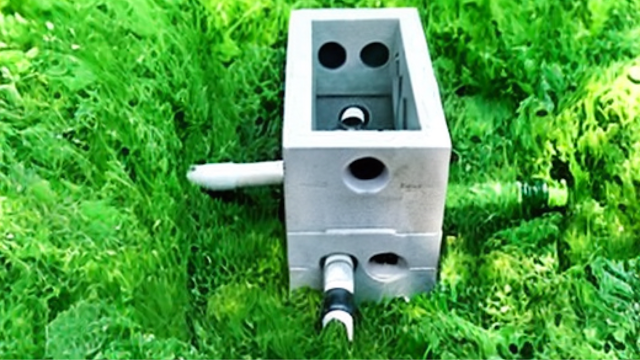

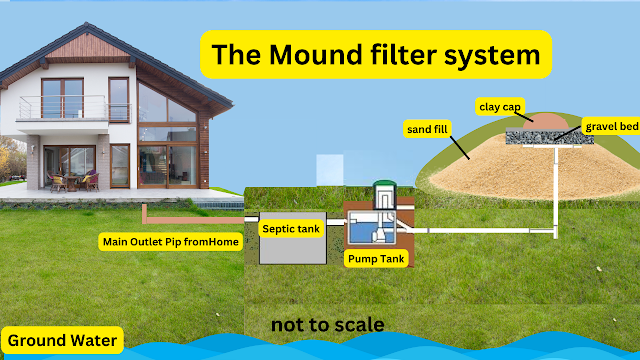
.png)

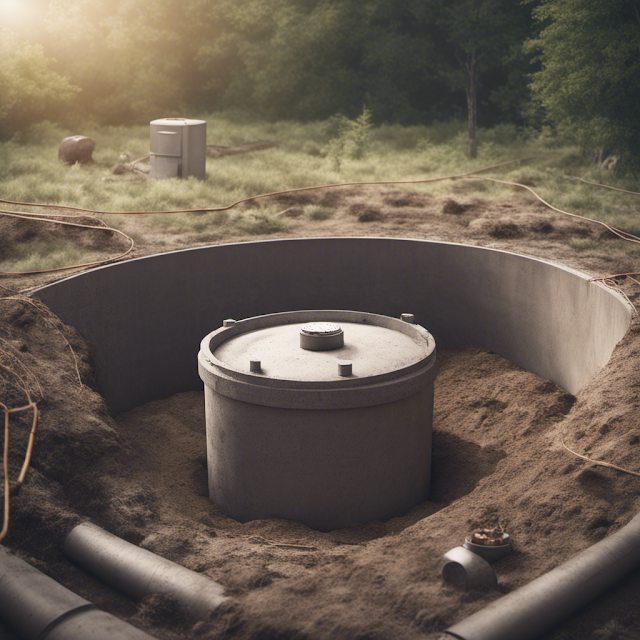
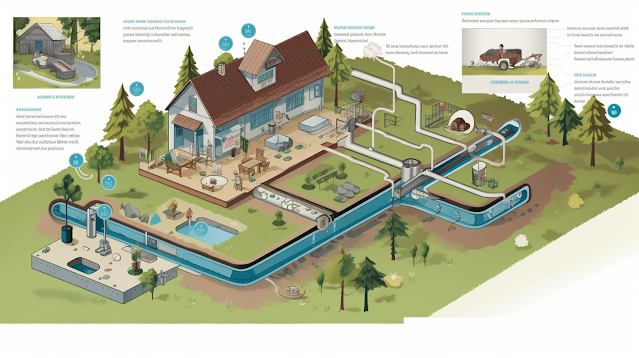
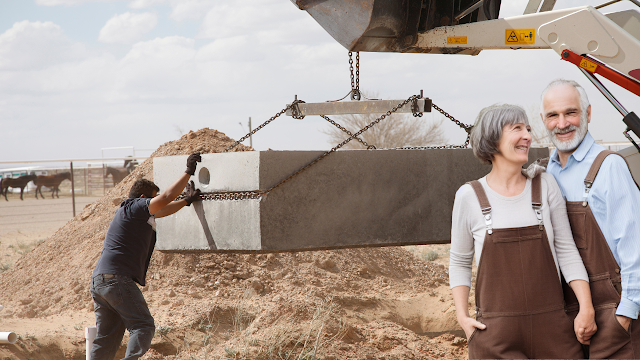


Comments
Post a Comment